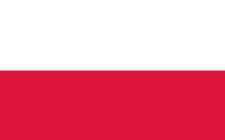



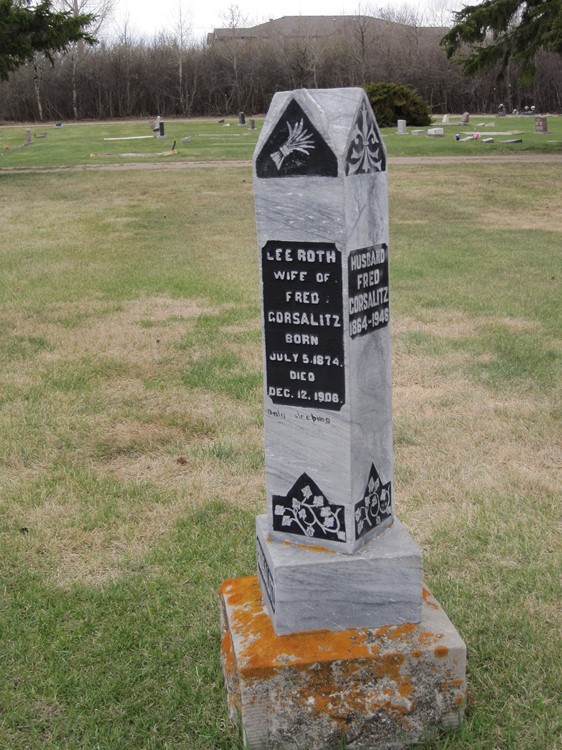
click on the photo for details
The research carried out in Poland and Germany to find a trace of the
Gorsalitz families has "turned white". The reason is simple: John Gorsalitz was
a Prussian. At the end of World War II, its region of origin was cut in two, one
part remained German, the other part was attached to Poland which depended on
the Soviet bloc. Research in these areas is very difficult. It is likely that
"Gorsalitz" is a name given to this Prussian when he arrived in Canada when he
said he came from "Görlitz" ... we may one day be able to get our hands on an
official document of the time.
For Léa Roth, we have precise information on her origins.
But the assumptions about a departure for Canada with Irish emigrants have
turned out to be wrong. In addition, Léa's handwritten transcriptions gave birth
to Lee, Leah, Lili Roth ... which do not simplify research!
We know that Lea was sent to Canada on a boat called
"Narnia" in June 1884 by the National Children London who had taken her in.
The boat set sail in Liverpool and arrived in Quebec the
same year.
Léa appears on the 1891 census lists in Canada with a
"Maïté" family and we can assume that she lived in the service of this family.
She got married in 1895. Did she stay with this family
until then? or was she employed in the orphanage near Makinak?
Léa appears on the 1901 census lists with her husband and
4 children and we are sure that she remained with her family until her death on
December 6, 1906.
We also know that the aid organizations of the time in
England took back children wandering the streets to save them from a difficult
working life, convert them to Anglicanism, and that in some cases these children
were sent alone or with them. families to populate colonies all over the world.
Since the beginning of the 2000s, some governments have apologized for the
errors and negligence relating to this "forced emigration".
Leah was undoubtedly considered a Jewish child. Roth is obviously a Jewish
name.
On this subject, Linev August, Norma's friend, who died on August 06,
2017, the contact through which I was able to advance in my research has an idea
on the question.
At this precise time (1875/1880), a missionary evangelist named George
Muller (https://en.m.wikipedia.org/wiki/George_Müller) could be at the origin of
Leah's departure for England.
1) Its mission was to convert the Jews to Christianity
2) He was in charge of an orphanage in England
3) He was of German origin
4) He traveled a lot in Switzerland, France and Germany during these
years.
No precise fact comes to support these assumptions, but the approach of
this missionary fits well with the attitude of the religious of the time towards
the orphans in England.
Research is still ongoing with the Canadian branch Gorsalitz on the one
hand and National Children UK and Action for Children London on the other hand
...
You just have to come across "the right person" who can search the
archives and find the recording of Léa's entry into an orphanage in London.
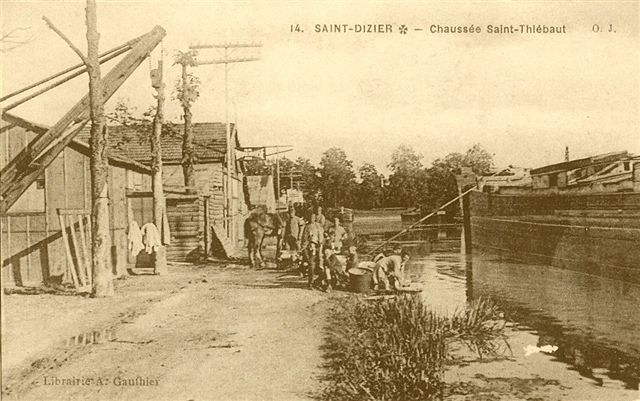
The street where Léa Roth was born in 1874
On July 5th, 1874, a certain Philippe Roth, aged 48, a cooper in Saint-Dizier,
living on rue St Thiébault in the residential suburb of Gigny, declared to the
town council that his wife Catherine Lutmann, aged 40, had just given birth to a
little girl named Léa Roth.
Two years later, Catherine died, leaving behind her two orphans, Léa and
her elder brother. Her husband, alone with his two children, sank into
alcoholism and neglected his children.
In 1879, the clergy of Saint Dizier took the children away from their
father and entrusted Léa (who was then 5 years old) to “some people” bound for
England.
Léa’s brother Philippe (then aged 9) was placed in a farm in Switzerland.
He would only leave it to go back to France at the age of 12. The police picked
him up and brought him back to his father’s, who had remarried and no longer
lived in Saint Dizier. As he didn’t get on well with his stepmother, he left
alone to his native region and got hired in the blast furnaces of Marnaval.
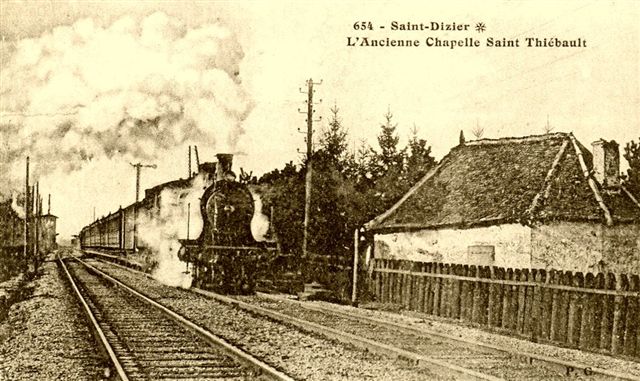
Back in Marnaval where he got
married on November 17th, 1890, he set up home and started a family on 12 rue du
bois. He and his wife had five children. In 1897 his wife gave birth to a girl
he named Léa, in memory of his sister that he never saw again.
It was that very Léa Roth who married Fernand Delaplace, Maurice
Delaplace’s father.
So Léa Roth, who immigrated to Canada, was Maurice’s great aunt, on his
mother’s side.
It has been impossible to find out who these “people” who took that
five-year-old girl to Canada were and how she quickly found herself in an
orphanage in Makinak, Manitoba.
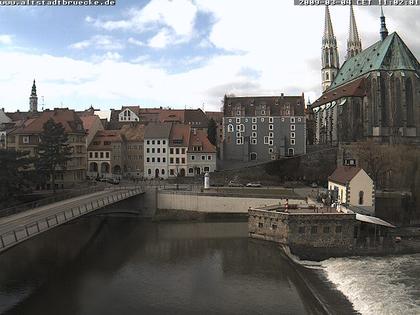
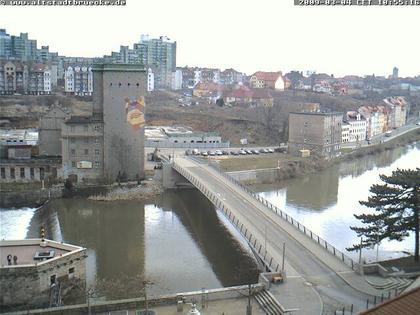
Görlitz (Germany) and Zgorzelec (Poland)
are actually the same town, which has been divided up by history.

Léa Roth’s story between 1879
and1894 is totally unknown to us. We think that she was not adopted and stayed
in the orphanage for 15 years until she met Frederick.
FOREWORD
The story of each family that
immigrated to Canada has been marked by the same kind of experiences. It is
always the story of beings that left their families and friends to go to an
unknown land, deeply determined to find new lands which they would own.
They were looking for freedom, independence, opportunities
and security –these four liberties which were proclaimed many years after their
arrival- and wanted to be freed from their fears, from destitution, and hoped
for freedom of speech and freedom of worship.
These liberties were really worth the trials and tribulations
which could be necessary for their achievement. Many new emigrants, who didn’t
speak English at all and were illiterate, had to endure their lot until they
finally learn to communicate with the inhabitants of the country in which they
wanted to settle.
WHY DID THEY COME?
They left for many reasons. It depended on where they came from: some of them left for religious reasons, others were looking for independence or a better life for their children; others were looking for adventure, defying the unknown.THE TRIALS
They endured many trials before arriving in their new country. They already had to “survive” all the way across the ocean. The travellers would generally take their own provisions with them, which was necessary for the long journey; later arrangements enabled them to buy food and tickets at the same time, but it was so expensive that many of them would keep on taking their own food.
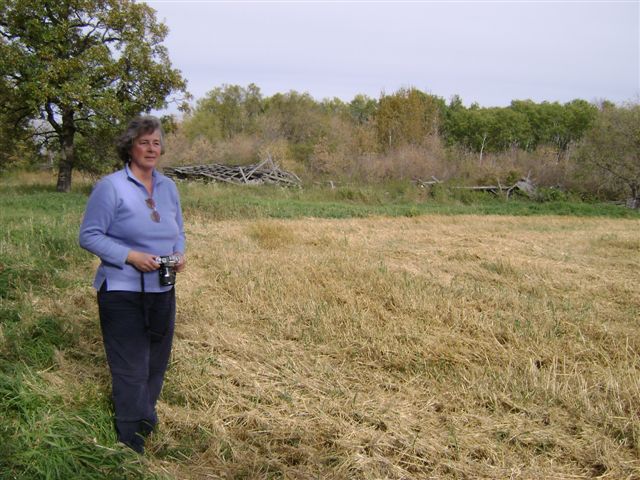

Frederick
and Léa’s farm, found in 2008 by Sandra Massey in the region of the Ochre River,
Manitoba.
Frederick and Léa were Sandra’s grandparents.

Pour savoir où l'on va, il faut savoir d'où l'on vient
La dernière mise à jour de cette page date du 22 avril, 2024 18:13